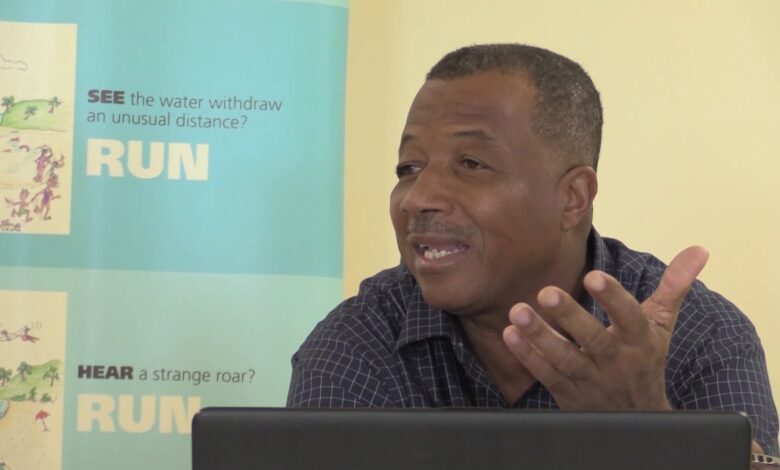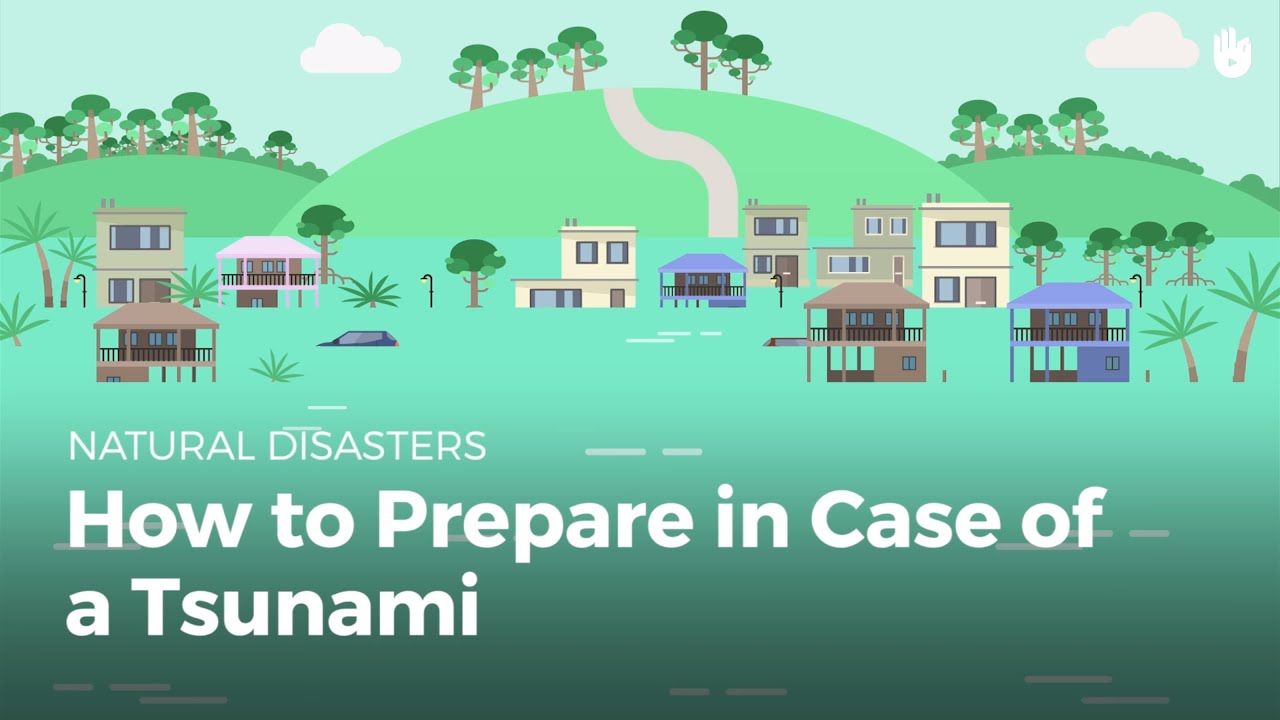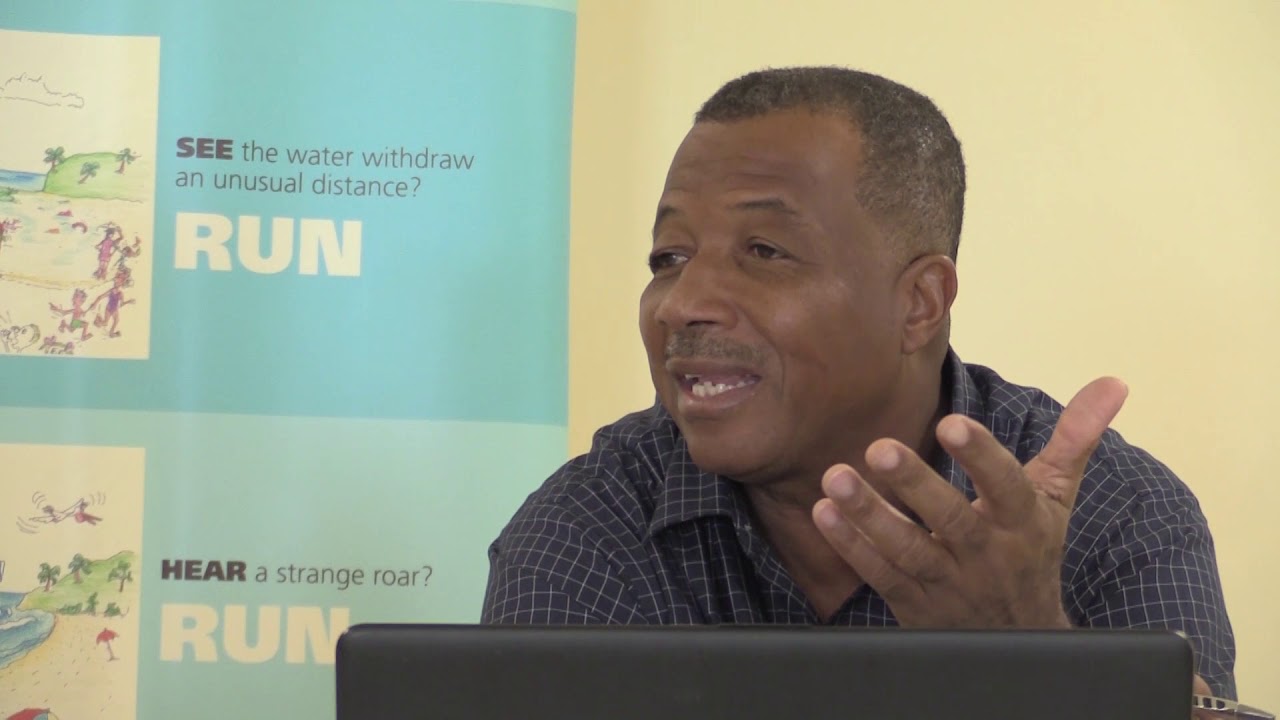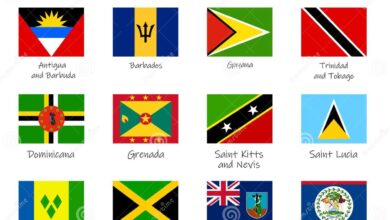
Caribbean Tests Tsunami Preparedness
Caribbean tests tsunami preparedness, showcasing a critical exercise in resilience and preparedness against the devastating power of tsunamis. This comprehensive look examines existing programs, community engagement, technological advancements, infrastructure considerations, international collaboration, and future recommendations to bolster the Caribbean’s ability to withstand such natural disasters. From individual communities to national governments, the region’s response is meticulously evaluated, highlighting successes, challenges, and potential improvements.
The Caribbean region, vulnerable to tsunamis, has developed programs to enhance its preparedness. This detailed analysis reviews the multifaceted approach, from community education and drills to sophisticated early warning systems and resilient infrastructure. The importance of international cooperation and future investments is also emphasized.
Caribbean Tsunami Preparedness Programs

The Caribbean region, situated in a seismically active zone, faces a significant tsunami threat. Understanding and mitigating this risk requires comprehensive preparedness programs at various levels, from individual communities to national governments. This necessitates a multi-faceted approach that combines scientific monitoring, community education, and robust infrastructure development. Effective tsunami preparedness programs are crucial for minimizing potential devastation and saving lives.Existing programs demonstrate a range of approaches and varying degrees of effectiveness.
Strengthening these programs through improved coordination, resource allocation, and community engagement will significantly enhance the region’s resilience against future tsunamis.
Existing Tsunami Preparedness Programs in the Caribbean
Caribbean nations have implemented various tsunami preparedness programs. These initiatives vary in scope and resources, reflecting the unique challenges and capacities of individual island nations. A crucial aspect is the establishment of early warning systems, coupled with evacuation protocols and community education programs.
Levels of Preparedness
Preparedness spans from individual communities to national governments. Individual communities play a vital role in preparedness through education, evacuation planning, and practicing drills. National governments, with the aid of international organizations, are responsible for developing comprehensive national plans, coordinating resources, and establishing robust early warning systems. Regional collaboration is also essential for sharing information and best practices.
Successful Initiatives and Best Practices
Successful initiatives often involve community-based training programs, drills simulating tsunami scenarios, and the development of evacuation routes. For example, some islands have established designated evacuation zones and practice drills involving the entire population. Clear communication protocols and well-maintained infrastructure are crucial components of effective preparedness.
Caribbean nations are rigorously testing tsunami preparedness, ensuring their communities are ready for any potential disaster. With the recent announcements of reopenings for resorts in Bimini and St Martin, bimini and st martin resorts announce reopenings , it’s a reminder that these beautiful destinations are actively rebuilding and working towards a resilient future, showcasing the Caribbean’s determination to not only recover but also to be prepared for any future challenges.
This preparedness is crucial for the safety and well-being of visitors and residents alike.
Resources and Areas for Improvement
The resources allocated to tsunami preparedness programs vary across the Caribbean. Some nations have invested significantly in early warning systems and community education, while others face limitations in funding and expertise. Areas needing improvement include strengthening early warning systems, enhancing community engagement, and improving communication protocols. Increased international cooperation and financial support are essential to bolster these programs.
Comparative Analysis of Caribbean Nations’ Tsunami Preparedness
| Nation | Early Warning System | Evacuation Protocols | Community Education Programs |
|---|---|---|---|
| Barbados | Basic system, relying on regional networks | Well-defined evacuation zones and plans | Limited community awareness campaigns |
| Jamaica | Developing advanced early warning systems | Evacuation plans in place but require updating | Community engagement programs underway |
| Dominican Republic | Moderate system with room for improvement | Evacuation procedures established but need refinement | Efforts to educate communities about tsunami risks |
| Haiti | Limited early warning infrastructure | Evacuation protocols lacking in some areas | Community awareness programs need significant enhancement |
| Puerto Rico | Advanced system, utilizing multiple data sources | Well-established evacuation plans and regular drills | Extensive community education programs, incorporating schools |
Community Engagement and Education
Community engagement is crucial for effective tsunami preparedness in the Caribbean. A proactive and informed populace is the first line of defense against this devastating natural hazard. Engaging communities empowers them to take ownership of their safety and strengthens the overall resilience of the region. This approach goes beyond simply providing information; it fosters a culture of preparedness that translates into action during a crisis.Understanding the potential impact of tsunamis, coupled with knowledge of safety measures, is paramount to minimizing loss of life and property.
Educating communities about the signs and symptoms of an approaching tsunami, as well as the appropriate evacuation routes and shelters, is essential. This includes tailoring the information to different demographics and ensuring that the message is clear, concise, and easily understood. Emphasis should also be placed on developing practical skills, like identifying warning signals and executing evacuation procedures.
Importance of Community Engagement
Engaging communities in tsunami preparedness activities builds a strong foundation for resilience. It fosters a sense of shared responsibility and empowers individuals to take proactive steps to protect themselves and their loved ones. Community involvement in planning, training, and drills ensures that evacuation procedures and safety measures are relevant and effective. This approach also strengthens the social fabric of the community, promoting collaboration and mutual support during and after a tsunami event.
Effective Strategies for Education
Clear and concise communication plays a vital role in educating communities about tsunami risks. Visual aids, such as maps highlighting evacuation zones and tsunami inundation areas, can significantly enhance understanding. Community workshops and presentations delivered by local experts and officials can effectively convey essential information. Simulations and role-playing exercises can help individuals practice evacuation procedures in a safe and controlled environment.
Crucially, educational materials should be translated into multiple local languages to ensure wider accessibility and comprehension.
Community-Based Training Programs and Drills, Caribbean tests tsunami preparedness
Regular drills are critical to reinforce safety measures and ensure preparedness. Community-based training programs should incorporate interactive sessions, where individuals learn about tsunami warning systems, evacuation procedures, and self-rescue techniques. These programs can be tailored to specific communities, considering local vulnerabilities and needs. Simulations can involve local officials, emergency responders, and community members, practicing the roles and responsibilities in a tsunami event.
For example, a program in a coastal village could focus on evacuating residents to higher ground, while a program in a tourist area could emphasize evacuation procedures for tourists. Practicing these drills builds familiarity and reduces panic during an actual event.
Roles of Local Leaders and Organizations
Local leaders and organizations play a critical role in raising awareness and fostering community participation in tsunami preparedness programs. Local government officials, community leaders, religious figures, and school teachers can act as influential messengers to disseminate crucial information and encourage participation in training and drills. Collaboration between these groups and relevant organizations, such as emergency services and local disaster relief agencies, can further enhance the effectiveness of preparedness efforts.
Organizations can develop and implement localized community-based training materials and evacuation plans.
Communication Methods for Disseminating Tsunami Information
| Communication Method | Description | Advantages | Disadvantages |
|---|---|---|---|
| Community Meetings | Local meetings to deliver information directly to community members. | Direct interaction, immediate feedback, personalized explanations. | May not reach everyone, potentially time-consuming. |
| Radio Broadcasts | Utilizing local radio stations to disseminate important information. | Wide reach, accessible to most residents, immediate delivery. | Limited ability for detailed explanations. |
| Social Media | Utilizing platforms like Facebook, WhatsApp, and community-specific groups. | Rapid dissemination, targeted messages, visual aids possible. | Requires digital literacy, potential for misinformation. |
| Community Newsletters/Posters | Distribution of printed materials to inform residents. | Relatively inexpensive, easy to understand for those without digital access. | Distribution can be challenging, information may not reach everyone. |
Early Warning Systems and Technology
Caribbean nations face a significant threat from tsunamis, necessitating robust early warning systems. These systems are crucial for minimizing loss of life and property by providing timely alerts to coastal communities. Effective preparedness relies heavily on accurate and timely information, enabling swift evacuation procedures. This is especially important given the region’s vulnerability to seismic activity and the potential for devastating tsunami events.
Function of Early Warning Systems
Early warning systems in the Caribbean function as a critical link between seismic monitoring and community safety. These systems detect seismic activity and ocean disturbances, using advanced technologies to assess the potential for tsunami generation. If a tsunami is predicted, the system triggers alerts, allowing for prompt evacuation of coastal areas. This rapid response is paramount to minimizing casualties and damage.
The system operates by identifying seismic events, measuring their magnitude, and analyzing their potential to trigger a tsunami. The data is then processed and disseminated to relevant authorities and the public.
Latest Technological Advancements in Tsunami Detection and Forecasting
Technological advancements are constantly improving tsunami detection and forecasting capabilities. Sophisticated seismic sensors are placed strategically across the region to monitor seismic activity with greater precision. Buoys and pressure sensors are deployed in coastal waters to measure changes in sea level. These sensors collect data that is used to create accurate models of tsunami propagation, helping predict arrival times and wave heights.
Integration of data from different sources provides a more comprehensive understanding of potential tsunami threats. Modern data analysis techniques are used to refine the accuracy and reliability of forecasts.
Reliability and Accuracy of Existing Systems
The reliability and accuracy of existing systems vary. Some systems have proven effective in detecting and forecasting tsunamis, leading to timely warnings and evacuations. However, challenges remain in terms of data integration and dissemination, especially in less developed areas. Furthermore, the accuracy of forecasts is influenced by the quality and completeness of data collected. Accurate and timely dissemination of information is crucial, which may require infrastructure upgrades and community education.
Need for Infrastructure Improvements
Infrastructure improvements are crucial for enhancing the effectiveness of early warning systems. Reliable communication networks are essential for disseminating warnings to coastal communities in a timely manner. Modernization of existing infrastructure, such as radio broadcasting and mobile communication networks, will significantly enhance the reach of alerts. Furthermore, investment in training and education programs for coastal communities is vital for ensuring the successful implementation of the early warning system.
Types of Early Warning Systems in the Caribbean
| Type of System | Strengths | Weaknesses | Examples in the Caribbean |
|---|---|---|---|
| Seismic Monitoring Networks | Detect seismic activity quickly and precisely. | Accuracy depends on sensor density and network maintenance. | Several networks operate across the region, varying in coverage. |
| Deep-Ocean Buoy Networks | Measure changes in sea level with high sensitivity. | Buoys can be vulnerable to damage or malfunction. Maintenance and data transmission can be costly. | Limited deployment due to high costs. |
| Coastal Tide Gauges | Provide real-time data on sea-level changes. | Limited coverage and less accurate than deep-ocean buoys. | Common in many coastal areas but often not integrated into wider systems. |
| Wireless Communication Networks | Disseminate warnings rapidly and reliably. | Vulnerable to disruptions from natural disasters or infrastructure damage. | Mobile networks, radio transmissions. |
Infrastructure and Building Codes
Coastal infrastructure plays a critical role in a community’s resilience to tsunamis. Properly designed and constructed buildings, roads, and utilities can significantly reduce the impact of a tsunami on human lives and property. Conversely, poorly planned infrastructure can exacerbate the devastation, making communities more vulnerable. Effective building codes that incorporate tsunami safety standards are crucial for mitigating these risks.
Impact of Infrastructure on Tsunami Resilience
Infrastructure, including roads, bridges, and utilities, can significantly influence a community’s ability to withstand a tsunami. Well-maintained and strategically located infrastructure can facilitate evacuation, communication, and rescue efforts. Conversely, inadequate or poorly located infrastructure can hinder these crucial responses. The design of critical infrastructure should account for the potential for tsunami inundation, incorporating measures to minimize damage.
This includes elevating critical facilities, reinforcing structures, and establishing clear evacuation routes.
Need for Building Codes Incorporating Tsunami Safety Standards
Robust building codes that specifically address tsunami hazards are essential for safeguarding lives and property. These codes must dictate construction techniques, materials, and design considerations tailored to the specific tsunami risk of the coastal location. Building codes must incorporate factors like the expected height and velocity of tsunami waves, the soil characteristics of the area, and the potential for liquefaction.
The Caribbean’s recent tsunami preparedness drills highlight the importance of coastal safety, especially as vacationers flock to the region. With the increasing popularity of smaller, more intimate all inclusive resorts go small, it’s crucial that these smaller establishments also prioritize safety protocols, ensuring that guests are well-informed about potential threats and evacuation procedures. This will help ensure that everyone, regardless of the size of the resort, is prepared for any emergency.
This proactive approach significantly reduces the likelihood of structural collapse during a tsunami event.
Coastal Development and Tsunami Risk
Coastal development patterns can significantly alter the natural landscape and, consequently, tsunami risk. The construction of structures directly in the path of potential tsunami inundation zones increases vulnerability. Dense development along coastal areas can impede evacuation efforts and obstruct the flow of water, potentially exacerbating flooding. The removal of natural coastal buffers, such as mangroves and dunes, also diminishes a region’s natural protection against tsunami waves.
Resilient Building Designs
Resilient building designs can significantly enhance the ability of structures to withstand tsunami waves. These designs incorporate principles like elevated foundations, reinforced structural elements, and materials resistant to high water pressure and erosion. Elevated foundations, positioned above potential inundation levels, are a key element in minimizing damage. Reinforced structural elements, capable of withstanding strong currents and debris, also contribute to resilience.
Materials like reinforced concrete, high-strength steel, and specialized coatings offer increased protection against erosion and damage.
Examples of Building Types and Their Relative Tsunami Resistance
| Building Type | Description | Relative Tsunami Resistance (Low/Medium/High) | Explanation |
|---|---|---|---|
| Low-Rise Residential Homes | Traditional single-family homes on typical foundations. | Low | Vulnerable to inundation and structural damage due to wave impact and water pressure. |
| Elevated Multi-Family Apartments | Buildings with elevated foundations above anticipated flood levels. | Medium | Increased resistance due to elevation, but still susceptible to high-velocity currents and debris impact. |
| Coastal Hotels/Resorts | Large structures often incorporating public spaces and high occupancy levels. | Medium | Can benefit from elevated designs, but vulnerable to significant structural damage and displacement of occupants if not properly constructed. |
| Infrastructure (Bridges, Roads, Utilities) | Critical infrastructure vital for post-tsunami recovery. | Medium to High | Design and construction need to account for wave impact and scour. Elevated placement and resilient materials are crucial. |
International Cooperation and Collaboration: Caribbean Tests Tsunami Preparedness
International collaboration is crucial for effective tsunami preparedness in the Caribbean. The region’s vulnerability to tsunamis, coupled with its limited resources in some areas, necessitates a unified approach that leverages the expertise and resources of international partners. Sharing knowledge, technology, and best practices across borders is paramount to strengthening the overall resilience of Caribbean nations to these natural hazards.Effective tsunami preparedness requires a multifaceted approach.
This includes not only developing robust early warning systems but also educating communities, building resilient infrastructure, and fostering strong international partnerships. The exchange of information and resources among Caribbean nations and with international organizations plays a vital role in this process. This collective effort ensures a more coordinated and comprehensive response to potential tsunami threats.
Role of International Organizations
International organizations like the United Nations Office for Disaster Risk Reduction (UNDRR), the International Tsunami Information Centre (ITIC), and various specialized agencies play a significant role in supporting Caribbean tsunami preparedness. They provide technical assistance, funding, and training to enhance the capacity of Caribbean nations to build resilient communities. Their expertise spans a wide range of areas, from early warning system development to community engagement and education.
These organizations often serve as crucial catalysts in coordinating international support for vulnerable nations.
The Caribbean’s recent tsunami preparedness drills highlight the region’s commitment to coastal safety. These exercises are crucial for community resilience, but also demonstrate the importance of preparedness across all industries, like the cruise sector. For example, a key figure in the cruise industry, bauer assumes new role at rccl , is taking on a new challenge, which will hopefully influence cruise line safety procedures.
Ultimately, these combined efforts ensure the Caribbean remains prepared for any natural disaster.
Importance of Sharing Best Practices and Resources
Sharing best practices and resources among Caribbean nations is vital for enhancing regional preparedness. Different nations may have unique challenges and strengths in their approach to tsunami preparedness. By exchanging information on successful strategies, innovative technologies, and community engagement initiatives, Caribbean nations can learn from each other and adapt effective approaches to their specific contexts. This collaborative approach promotes a regional culture of preparedness and resilience.
This is not just about sharing, but about building upon each other’s expertise.
Examples of Successful International Collaborations
Several examples showcase successful international collaborations in tsunami preparedness. One example involves the development and deployment of a regional early warning system, facilitated by international partners. Another example demonstrates the implementation of joint training programs for disaster response personnel, strengthening their skills in managing tsunami events. These collaborations have proven to be invaluable in building regional capacity and fostering a collective response to tsunami threats.
Need for Regional Coordination and Planning
Effective regional coordination and planning are essential to enhance the effectiveness of tsunami preparedness efforts in the Caribbean. A comprehensive regional strategy should encompass the development of common standards, protocols, and communication channels. This will ensure a unified approach to disaster response and allow for more efficient resource allocation. A coordinated approach can also help ensure that resources are utilized effectively and efficiently, strengthening the overall preparedness efforts.
Importance of Regional Cooperation in Tsunami Response and Preparedness
| Caribbean Nation | Specific Contribution | International Partner | Impact |
|---|---|---|---|
| Barbados | Developing community-based evacuation plans | UNDRR | Increased community resilience and reduced vulnerability |
| Dominica | Strengthening early warning system infrastructure | ITIC | Improved detection and response times |
| Jamaica | Training first responders in tsunami response techniques | USAID | Enhanced preparedness for effective response |
| Trinidad and Tobago | Developing tsunami-resistant building codes | World Bank | Reduced damage and loss of life in the event of a tsunami |
This table highlights the importance of regional cooperation, demonstrating how collaborative efforts can lead to improved tsunami preparedness and response. Each nation contributes to the collective strength of the region. This collective approach strengthens the resilience of the entire Caribbean region.
Future Directions and Recommendations

Looking ahead, the Caribbean’s tsunami preparedness efforts require a proactive and adaptable approach. Building on the existing framework, future investments and strategic initiatives are crucial for enhancing community resilience and mitigating the devastating impact of future tsunamis. This involves not only strengthening existing programs but also exploring innovative approaches and fostering ongoing research to stay ahead of potential threats.
Key Areas for Future Investment
Investment in advanced technologies, particularly in real-time data collection and dissemination, is paramount. This includes upgrading and expanding existing early warning systems to provide more accurate and timely alerts to vulnerable coastal communities. Improved communication infrastructure is equally important, enabling prompt and effective dissemination of crucial information during a tsunami event. Financial resources should also be directed towards community-based preparedness initiatives, focusing on education and training programs to empower residents with the knowledge and skills necessary to respond effectively.
Strengthening local capacity building programs will ensure the sustainability of preparedness efforts over the long term.
Strengthening Existing Programs and Initiatives
The Caribbean Tsunami Warning System (CTWS) should continue to receive robust support. This includes sustained investment in personnel training, technological upgrades, and maintenance to ensure the system’s reliability and accuracy. Community engagement initiatives should be scaled up, emphasizing interactive workshops and drills. These activities will enhance community awareness, preparedness, and response capabilities. Regular assessments and evaluations of existing programs are vital to identify areas for improvement and adapt to evolving threats.
The Caribbean islands are diligently testing their tsunami preparedness plans, a crucial exercise given the region’s vulnerability. This preparedness is vital, especially as the increasing number of cruise ships, facilitated by a widened Panama Canal, will bring more people to the region. A widened Panama Canal will accommodate bigger cruise ships, increasing the potential for both tourism and disaster response challenges.
This highlights the importance of ongoing drills and community engagement for effective tsunami response in the Caribbean.
Ongoing Research and Development
Ongoing research is crucial to understanding the unique characteristics of tsunami hazards in the Caribbean region. Researchers should focus on developing improved models for predicting tsunami arrival times and magnitudes, particularly in the context of localized factors. Analyzing historical data and incorporating the latest scientific advancements in tsunami forecasting can significantly enhance the accuracy and effectiveness of early warning systems.
The Caribbean’s recent tsunami preparedness tests highlight the crucial need for robust systems. Effective communication is key, and successful disaster response hinges on accurate and timely information. This isn’t just about physical infrastructure, but also the vital role of advertising and the pioneer OTAs in disseminating crucial information. advertising and the pioneer OTAs played a significant part in getting the message out, and this awareness campaign is ultimately what makes the Caribbean’s tsunami preparedness tests so impactful.
The exercises are a valuable learning process for the region, and should improve response times in the future.
The integration of new technologies, such as advanced sensor networks and remote sensing, can improve data collection and analysis, leading to more accurate forecasts.
Innovative Approaches to Enhance Community Preparedness
Innovative approaches to enhance community preparedness should focus on integrating technology into education and outreach. Developing mobile applications and interactive websites can disseminate critical information in a user-friendly format. These resources should include interactive maps depicting potential tsunami inundation zones, evacuation routes, and emergency contact information. Simulations and mock drills should be incorporated into school curricula to educate future generations about tsunami preparedness.
Training programs for local first responders, such as fire and rescue personnel, should be enhanced to ensure they are equipped with the necessary skills to respond effectively during a disaster.
Summary of Key Recommendations for Improving Tsunami Preparedness
| Recommendation | Suggested Action | Responsible Party | Timeline |
|---|---|---|---|
| Enhance Early Warning System | Upgrade and expand existing systems, incorporating real-time data collection and dissemination | National and regional governments, CTWS | 2024-2028 |
| Strengthen Community Engagement | Scale up community engagement programs, including interactive workshops and drills | Local governments, NGOs | 2024-2026 |
| Invest in Research and Development | Develop improved tsunami prediction models, incorporating local factors and latest scientific advancements | Research institutions, universities | Ongoing |
| Implement Innovative Approaches | Develop mobile apps, interactive websites, and simulations to educate communities | Technology developers, educational institutions | 2025-2027 |
Visual Representations of Tsunami Impacts
The Caribbean islands, with their stunning coastlines and vibrant communities, are vulnerable to the devastating power of tsunamis. Understanding the potential impacts, the destructive force of these waves, and the long-term consequences on coastal populations is crucial for effective preparedness. This section will explore the multifaceted effects of a tsunami on Caribbean communities, offering vivid descriptions and illustrating the urgent need for preparedness programs.The devastating power of a tsunami lies not only in the initial wave surge but also in the subsequent inundation and erosion.
The sheer volume of water, often exceeding tens of feet in height, carries debris and destroys everything in its path. The long-term effects on coastal communities, including environmental damage and social disruption, are profound and necessitate proactive planning and education.
Potential Impacts of a Caribbean Tsunami
The Caribbean region’s diverse geography, from coral reefs to mountainous coastlines, influences the specific impacts of a tsunami. The depth of the ocean floor and the presence of coastal structures, like harbors and seawalls, can significantly alter the wave’s behavior and intensity.
- Coastal erosion is a significant concern. The powerful currents and wave action can strip away sand, leading to loss of beaches and coastal habitats. This can negatively impact tourism, fishing, and the overall aesthetic beauty of the region.
- Infrastructure damage is widespread. Buildings, roads, bridges, and utilities, including water and power systems, are susceptible to destruction. The resulting disruption to essential services can create a humanitarian crisis.
- Displacement and loss of life are the most tragic consequences. Communities located in low-lying areas or along vulnerable coastlines are at greatest risk. Evacuation procedures and preparedness measures are critical to minimizing these catastrophic outcomes.
Destructive Power of Tsunami Waves
Tsunami waves are not single, isolated events; they are a series of waves, often arriving in a crescendo of destructive power. These waves can inundate coastal areas with immense force, surpassing even the highest tides.
- Imagine the tranquil waters of a Caribbean beach suddenly transformed into a raging torrent. The water, initially calm, rises rapidly, swallowing homes, businesses, and everything in its path.
- The force of the water can easily lift and carry heavy objects, such as cars and large pieces of debris, creating a chaotic scene of destruction.
- The wave’s impact is not limited to the immediate shoreline. The powerful surge can extend inland, impacting communities and infrastructure far from the initial point of impact.
Effects on Coastal Communities
The consequences of a tsunami extend beyond the immediate destruction. The economic, social, and environmental impacts can be long-lasting.
- Loss of livelihoods: Fishing, tourism, and other industries that rely on coastal resources are severely affected. The destruction of infrastructure and the contamination of water sources can disrupt daily life and livelihoods.
- Mental health challenges: The trauma associated with witnessing the devastation and loss of loved ones can have lasting mental health consequences for individuals and communities. Support systems and mental health services are essential for recovery.
- Environmental damage: Coastal ecosystems, including coral reefs and mangroves, are vulnerable to damage. The contamination of water sources by salt water and debris can disrupt delicate marine ecosystems.
Aftermath of a Tsunami: Environmental and Social Consequences
The aftermath of a tsunami in the Caribbean presents significant environmental and social challenges. The recovery process is long and complex, demanding international support and local resilience.
- Environmental recovery: Cleaning up debris, restoring coastal ecosystems, and providing clean water and sanitation are critical steps in the recovery process. The long-term impact on marine life and coastal habitats needs to be assessed and addressed.
- Social recovery: Rebuilding infrastructure, providing temporary housing, and offering support services to affected communities are crucial. Community involvement and psychological support are essential for fostering resilience and rebuilding trust.
- Long-term adaptation: Communities need to assess the risks and vulnerabilities of their locations. Rebuilding with improved building codes, incorporating environmental considerations, and investing in early warning systems are crucial for long-term adaptation and resilience.
Examples of Tsunami Impacts in Caribbean Locations
“A tsunami in the Lesser Antilles could inundate coastal settlements and cause widespread damage to infrastructure.”
“The surge of a tsunami in the Dominican Republic could overwhelm coastal defenses, leading to significant loss of life and property.”
“Damage to critical infrastructure, like ports and airports, would severely hamper relief efforts and economic recovery in the Virgin Islands.”
Conclusion
In conclusion, the Caribbean’s efforts in tsunami preparedness demonstrate a commitment to community safety and resilience. This multifaceted approach, encompassing community engagement, technological advancements, infrastructure development, and international collaboration, is crucial for mitigating the devastating impacts of tsunamis. The ongoing commitment to research, development, and program improvement will be vital in strengthening the region’s capacity to respond effectively and adapt to future challenges.
Continued investment in these areas will be key to safeguarding the Caribbean’s vulnerable coastal communities.
FAQ Corner
What specific types of community engagement are highlighted in the Caribbean’s tsunami preparedness programs?
The programs emphasize community-based training programs and drills, leveraging the roles of local leaders and organizations in raising awareness and educating communities about tsunami risks and safety measures. Specific examples of effective strategies, like community meetings and public awareness campaigns, are discussed.
What role do international organizations play in supporting Caribbean tsunami preparedness?
International organizations play a critical role by supporting the sharing of best practices and resources among Caribbean nations, facilitating collaborations, and providing expertise. Examples of successful international collaborations and the need for regional coordination and planning are included.
What are the key recommendations for future investment in Caribbean tsunami preparedness?
Key areas for future investment include strengthening existing programs, supporting ongoing research and development, and implementing innovative approaches to enhance community preparedness. Recommendations, including suggested actions and timelines, are provided to address the identified needs.
How accurate and reliable are the current early warning systems in the Caribbean?
The analysis assesses the reliability and accuracy of the existing systems, highlighting the need for infrastructure improvements. The discussion covers the latest technological advancements in tsunami detection and forecasting, and a table comparing various systems and their strengths and weaknesses is presented.






